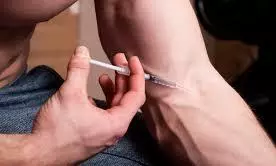
Anabolic steroids used in bodybuilding contain toxic metals: research
text_fieldsA new study has raised alarm over the safety of anabolic steroids being used for muscle growth in Australia, revealing that many of these underground products contain dangerous heavy metals such as lead, arsenic, and cadmium.
The findings highlight serious health risks and a growing need for tighter monitoring and public awareness.
Researchers tested 28 steroid products obtained through Australia’s illicit market, including injectable oils, oral tablets, and raw powders.
The analysis, carried out by an independent forensic laboratory, found that more than half of the samples were mislabelled or contained incorrect substances.
Some products didn’t contain the advertised steroid at all.
For instance, one product labelled as testosterone enanthate actually contained trenbolone, a more potent steroid, while another claimed to include 10mg of oxandrolone (commonly known as Anavar) but only had 6.8mg.
More concerningly, all tested products were contaminated with heavy metals, including lead, arsenic, and cadmium.
While the detected levels were within daily exposure limits considered safe by health authorities, the researchers warned that regular and prolonged use of these drugs could result in toxic metal accumulation in the body.
"If consumed above safe limits, research suggests lead can damage the brain and heart. Arsenic is a proven carcinogen, having been linked to the development of skin, liver, and lung cancers," the researchers noted.
Anabolic steroids are synthetic drugs that mimic testosterone and are medically prescribed for conditions such as hypogonadism. However, individuals seeking rapid muscle growth and enhanced athletic performance often misuse them.
The study also pointed to the origin of contamination, suggesting poor manufacturing practices and low-quality raw materials - particularly from some Chinese suppliers - as the cause. Metals may enter the products during synthesis or through contaminated equipment and solvents.
"We need to invest properly in a national steroid surveillance and testing network, which will give us data-driven insights to inform targeted interventions," the study’s authors urged.
They also recommended peer-led educational programs based on scientific evidence and supported by health professionals and people with lived experience of steroid use. Integration of these initiatives into existing needle-and-syringe programs could improve outreach and mitigate the risks associated with unregulated steroid consumption.


















